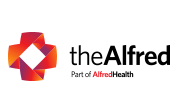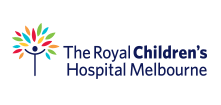Micro-organisms may be found in all burn wounds and good management should consider the bacterial load. Details regarding the mechanism of injury and first aid treatment can help determine whether the burn wound has been contaminated. Consider the burn wound has been contaminated in situations including but not limited:
- The patient rolled in the dirt to extinguish the flame
- The patient jumped into a river or dam
- Potentially contaminated water was used for first aid
- Signs of infection
The following strategies can help manage wound bacterial balance in such cases:
- Early and effective burn wound cleaning can reduce early bacterial load
- Silver or other antimicrobial dressings should be considered
- Frequent wound assessment in the initial days to assess for signs of infection.
- Antibiotics should only be prescribed in cases where infection cannot be managed by topical therapy, eg fever and worsening cellulitis
Infection
Infection of small ‘minor’ burn wounds is not common if they are appropriately managed, they will only persist in the wound if the right conditions exist for microorganisms to grow and multiply. Burn wound infections due to pathogenic organisms occur in the presence of coagulated proteins and microbial nutrients. Local infection is suggested by the presence of increasing erythema and pain, burn wound discolouration and purulence, or the development of fever. Burn wound infection may result in conversion of a superficial burn to a deep burn.
Prevention of infection
- Assess wound odour and amount of exudate, this will help in the early identification of infection.
- All wound management procedures require a strict asepsis.
- Dressings which facilitate debridement should be considered if necrotic tissue is present.
- Contaminated wounds require cleaning, adequate debridement and antimicrobial dressings.
- Optimise host resistance: good nutrition, smoking cessation etc
Clinical signs of wound infection include:
- Spreading peri-wound erythema.
- Warmth or tenderness of surrounding skin
- Pain
- Increased exudate
- Delayed healing
- Rapid sloughing of eschar
- Conversion of superficial wounds to full thickness.
- Focal, multifocal, or generalised dark brown, black, or violet discoloration of the wound.
Management of Wound Infection:
- Wound swabbed for microbiology and culture
- Mechanically remove non-viable infected tissue
- Antimicrobial dressings
- Frequent wound assessment
- Antibiotics that cover staphylococcal aureus and streptococcus pyogenes if infection cannot be managed by topical therapy eg, fever, cellultis.
- Surgical excision maybe required for invasive wound infections




